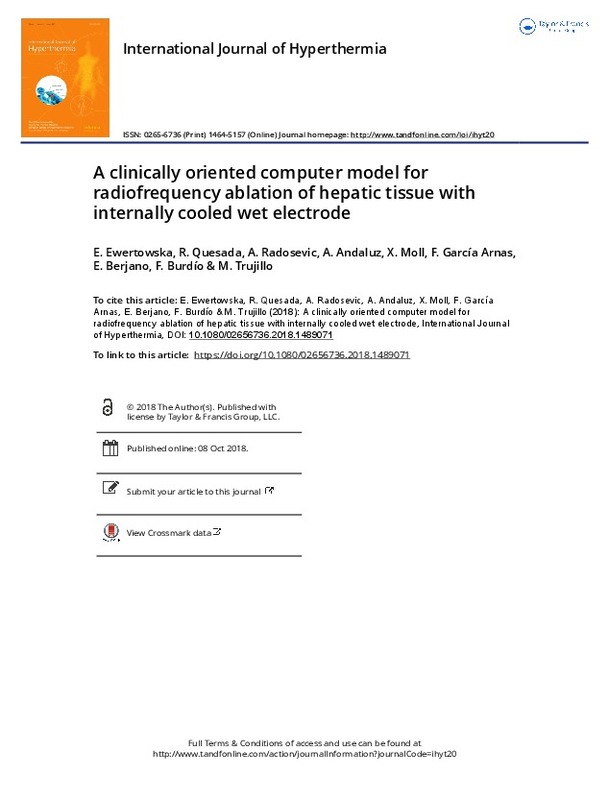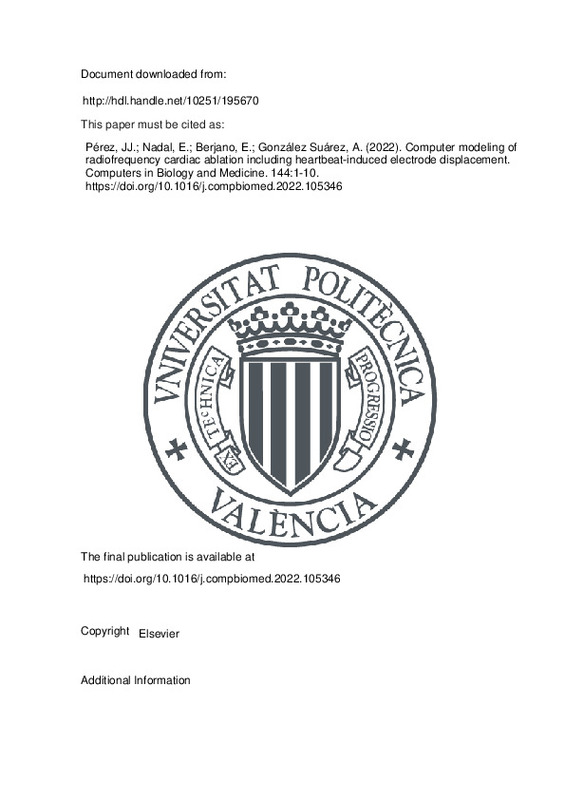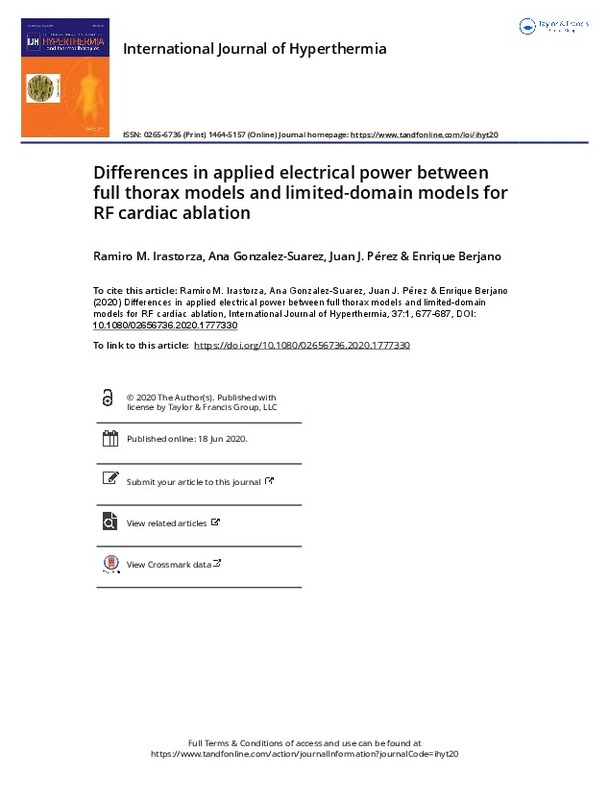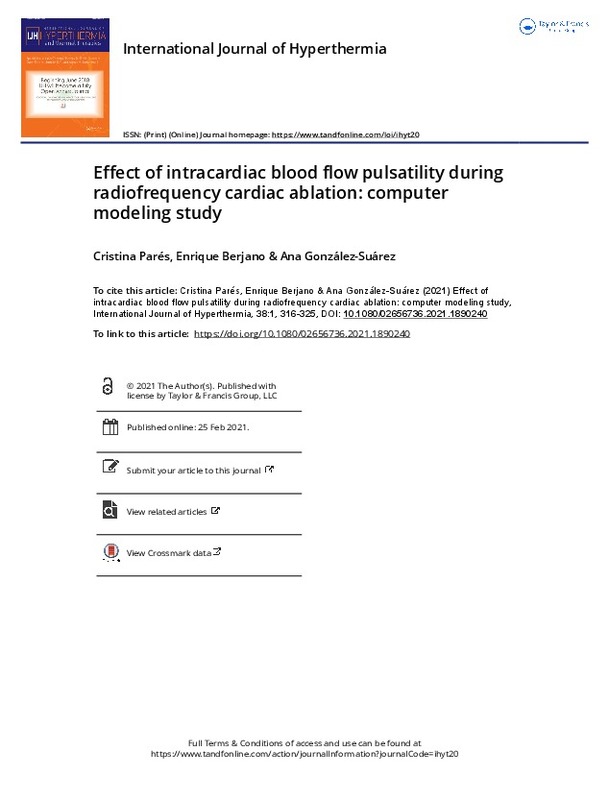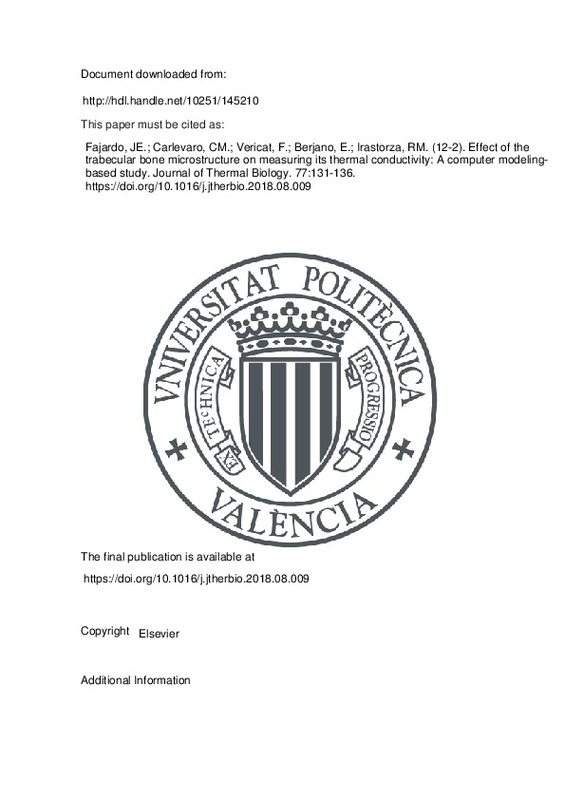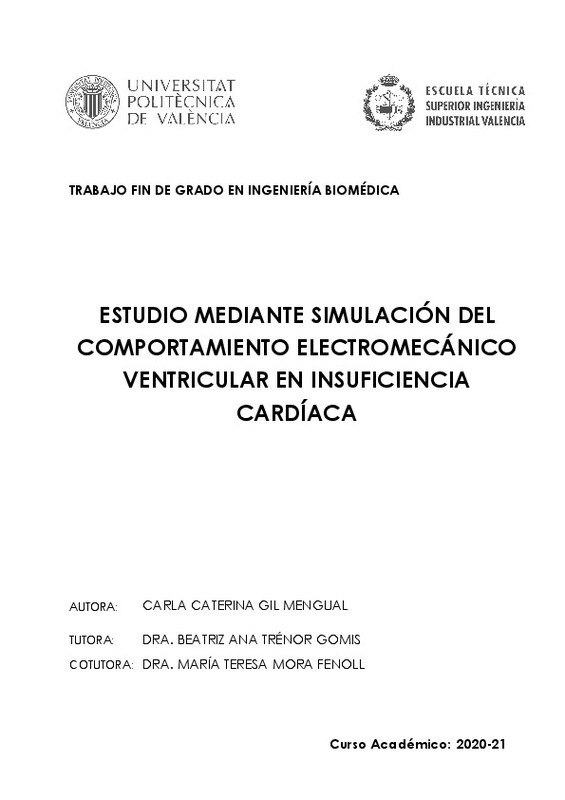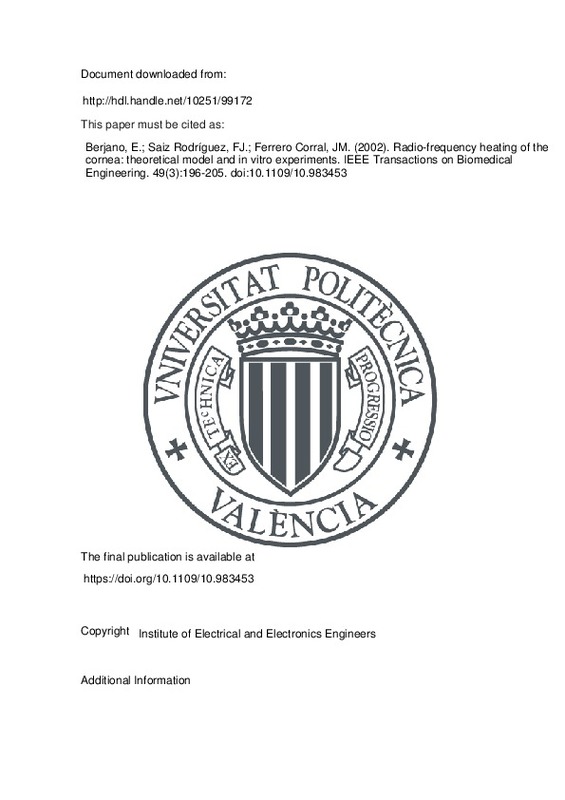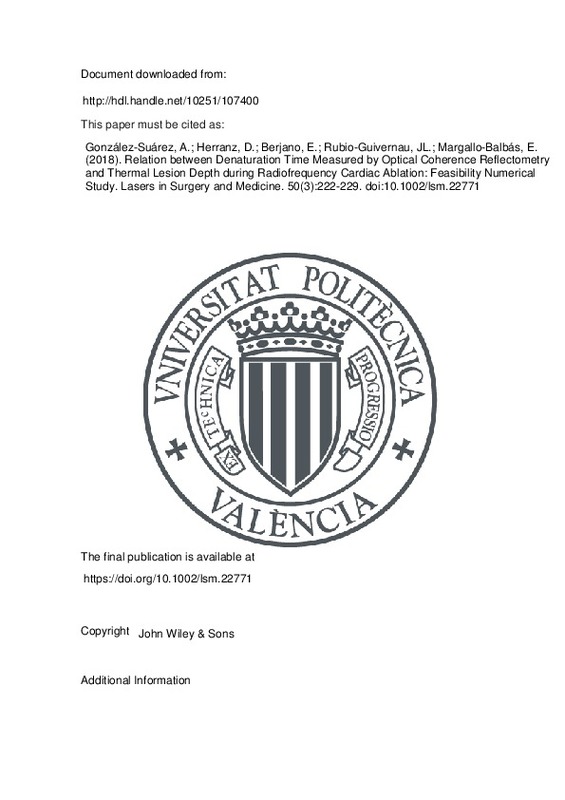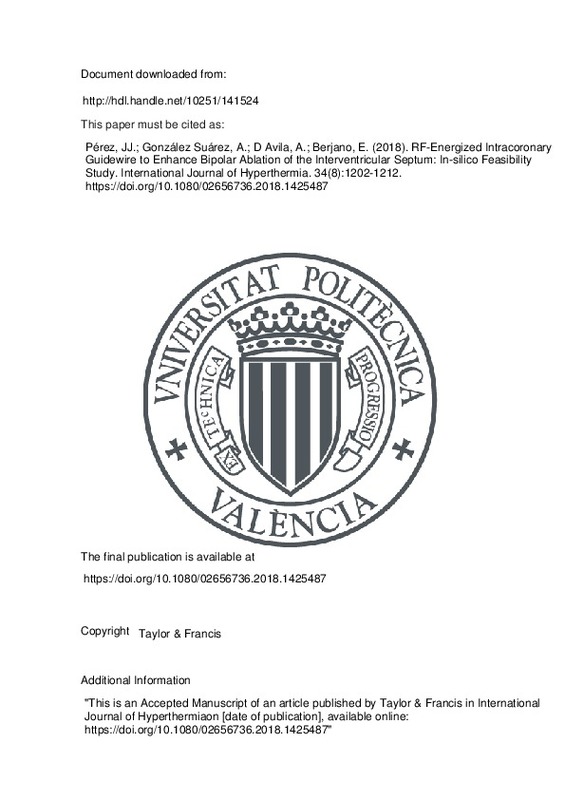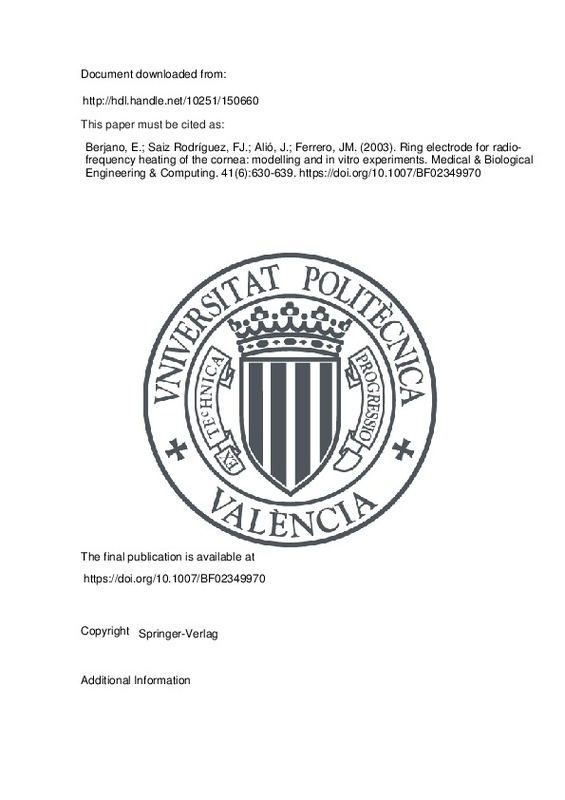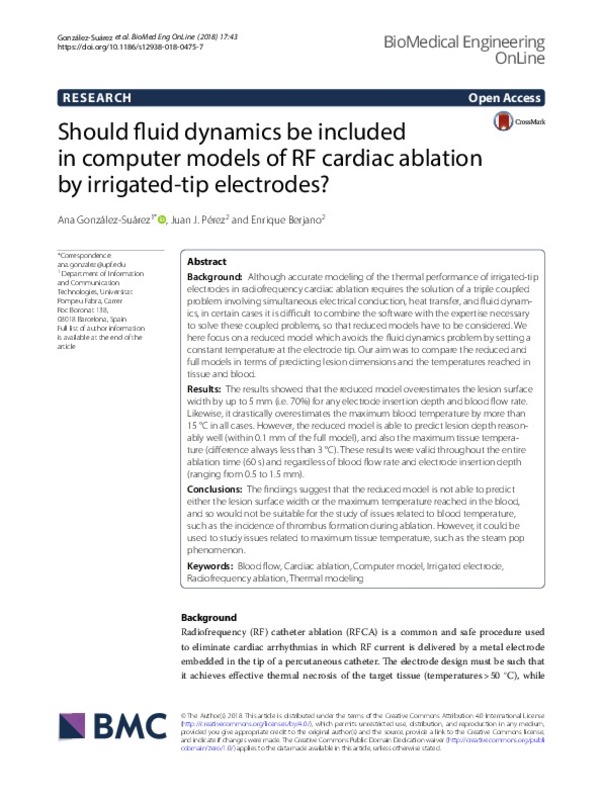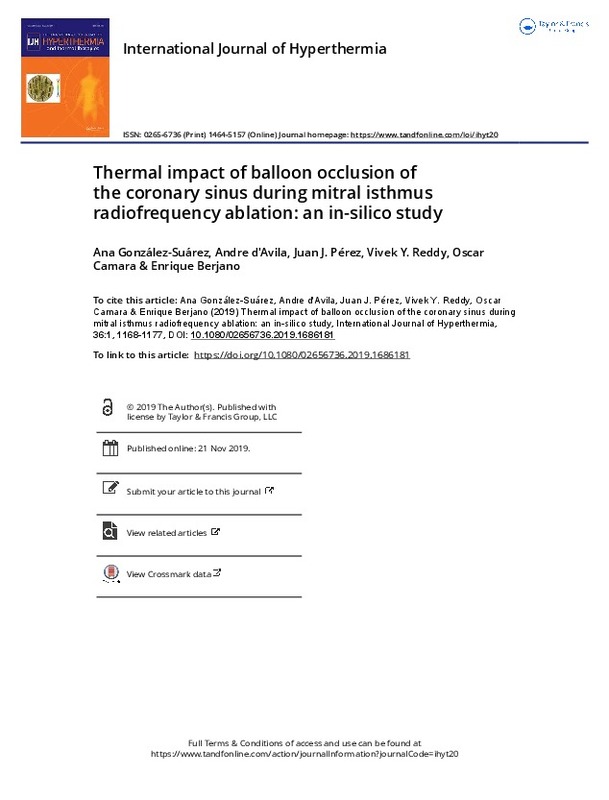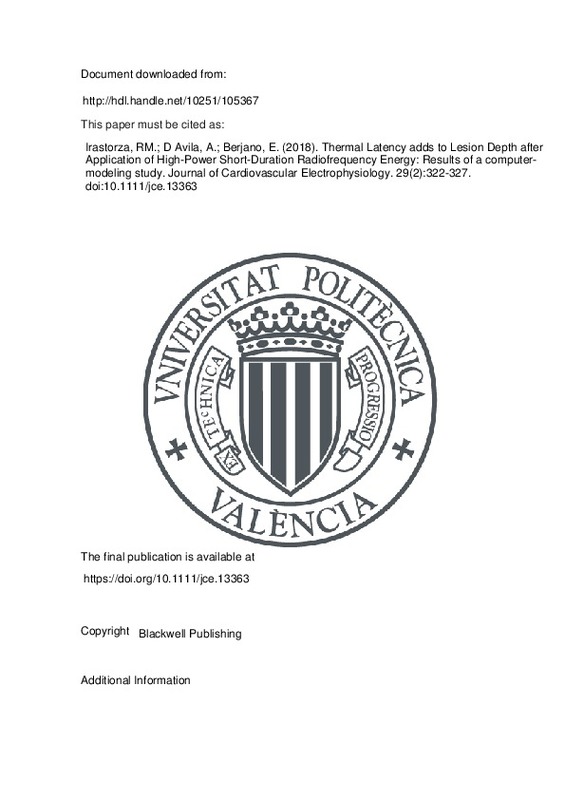

Listar por palabra clave "Computer model"
RiuNet: Repositorio Institucional de la Universidad Politécnica de Valencia
- RiuNet repositorio UPV
- :
- Listar por palabra clave
JavaScript is disabled for your browser. Some features of this site may not work without it.
Buscar en RiuNet
Listar
Mi cuenta
Ayuda RiuNet
Admin. UPV
Listar por palabra clave "Computer model"
Mostrando ítems 1-16 de 16
-
Ewertowska, Elzbieta; Quesada-Diez, Rita; Radosevic, A.; Andaluz, Anna; Moll, Xavier; García Arnás, F.; Berjano, Enrique; Burdío Pinilla, Fernando; Trujillo Guillen, Macarena (Taylor & Francis, 2019)[EN] Purpose: To improve the computer modelling of radiofrequency ablation (RFA) by internally cooled wet (ICW) electrodes with added clinically oriented features. Methods: An improved RFA computer model by ICW electrode ...
-
Pérez, Juan J; Ewertowska, Elzbieta; Berjano, Enrique (John Wiley & Sons, 2020-11)[EN] Background and Objectives Radiofrequency (RF)-induced ablation can be carried out inside ducts and vessels by simultaneously dragging a bipolar catheter while applying RF power. Our objective was to characterize the ...
-
Pérez, Juan J; Nadal, Enrique; Berjano, Enrique; González Suárez, Ana (Elsevier, 2022-05)[EN] Background: The state of the art in computer modeling of radiofrequency catheter ablation (RFCA) only considers a static situation, i.e. it ignores ablation electrode displacements induced by tissue movement due to ...
-
Irastorza, Ramiro M.; Gonzalez-Suarez, Ana; Pérez, Juan J; Berjano, Enrique (Taylor & Francis, 2020-01-01)[EN] Purpose:Most modeling studies on radiofrequency cardiac ablation (RFCA) are based on limited-domain models, which means the computational domain is restricted to a few centimeters of myocardium and blood around the ...
-
Parés, Cristina; Berjano, Enrique; González-Suárez, Ana (Taylor & Francis, 2021-01-01)[EN] Purpose To assess the effect of intracardiac blood flow pulsatility on tissue and blood distributions during radiofrequency (RF) cardiac ablation (RFCA). Methods A three-dimensional computer model was used to ...
-
Fajardo, Jesús E.; Carlevaro, C. Manuel; Vericat, Fernando; Berjano, Enrique; Irastorza, Ramiro Miguel (Elsevier, 2018-12)[EN] The objective of this work is to quantify the relation between the value of the effective thermal conductivity of trabecular bone and its microstructure and marrow content. The thermal conductivity of twenty bovine ...
-
Gil Mengual, Carla Caterina (Universitat Politècnica de València, 2021-09-09)[ES] Según la OMS, la insuficiencia cardíaca es la tercera causa de muerte en patologías cardiovasculares en países desarrollados. Este trabajo se centra en estudiar mediante simulación computacional los cambios electromecánicos ...
-
Coderch-Navarro, Sergi; Berjano, Enrique; Cámara, Óscar; González-Suárez, Ana (Taylor & Francis, 2021-01-01)[EN] Purpose While the standard setting during radiofrequency catheter ablation (RFCA) consists of applying low power for long times, a new setting based on high power and short duration (HPSD) has recently been suggested ...
-
Pérez, Juan J; González Suárez, Ana; Berjano, Enrique (Taylor & Francis, 2018)[EN] Purpose: The thermal effect of the intramyocardial blood perfusion on the size of lesions created by radiofrequency cardiac ablation (RFCA) has not been adequately studied to date. Our objective was to assess the ...
-
Berjano, Enrique; Saiz Rodríguez, Francisco Javier; Ferrero Corral, José María (Institute of Electrical and Electronics Engineers, 2002)[EN] We present a theoretical model for the study of cornea heating with radio-frequency currents. This technique is used to reshape the cornea to correct refractive disorders. Our numerical model has allowed the study of ...
-
González-Suárez, Ana; Herranz, David; Berjano, Enrique; Rubio-Guivernau, Jose L.; Margallo-Balbás, Eduardo (John Wiley & Sons, 2018)[EN] Background/Objective Radiofrequency (RF) catheter ablation is a minimally invasive medical procedure used to thermally destroy the focus of cardiac arrhythmias. Novel optical techniques are now being integrated into ...
-
Pérez, Juan J; González Suárez, Ana; D Avila, Andre; Berjano, Enrique (Taylor & Francis, 2018)[EN] Purpose: Although bipolar radiofrequency (RF) ablation (RFA) is broadly used to eliminate ventricular tachycardias in the interventricular septum wall, it can fail to create transmural lesions in thick ventricular ...
-
Berjano, Enrique; Saiz Rodríguez, Francisco Javier; Alió, J.; Ferrero, J. M. (Springer-Verlag, 2003-11)[EN] Radio-frequency thermokeratoplasty (RF-TKP) is a technique used to reshape the cornea curvature by means of thermal lesions using radio-frequency currents. This curvature change allows refractive disorders such as ...
-
González Suárez, Ana; Pérez, Juan J; Berjano, Enrique (Springer (Biomed Central Ltd.), 2018)[EN] Background: Although accurate modeling of the thermal performance of irrigated-tip electrodes in radiofrequency cardiac ablation requires the solution of a triple coupled problem involving simultaneous electrical ...
-
González-Suárez, Ana; d'Avila, Andre; Pérez, Juan J; Reddy, Vivek Y.; Cámara, Óscar; Berjano, Enrique (Taylor & Francis, 2019-01-01)
-
Irastorza, Ramiro Miguel; D Avila, Andre; Berjano, Enrique (Blackwell Publishing, 2018)[EN] Introduction: The use of ultra-short RF pulses could achieve greater lesion depth immediately after the application of the pulse due to thermal latency. Methods and results: A computer model of irrigated-catheter RF ...
Mostrando ítems 1-16 de 16

Universitat Politècnica de València. Unidad de Documentación Científica de la Biblioteca (+34) 96 387 70 85 · RiuNet@bib.upv.es


